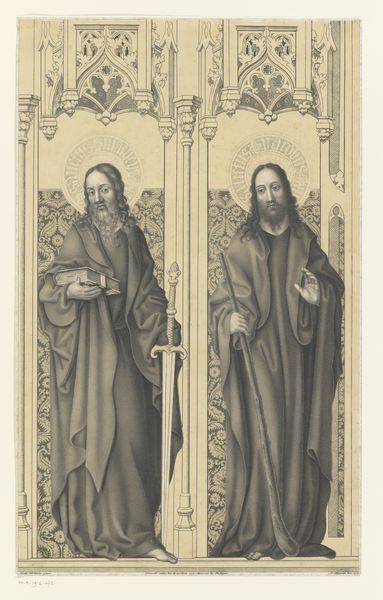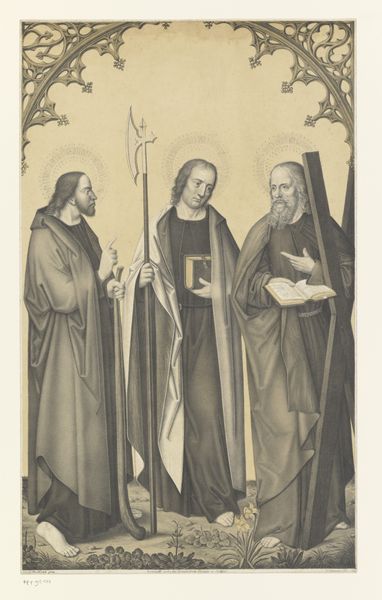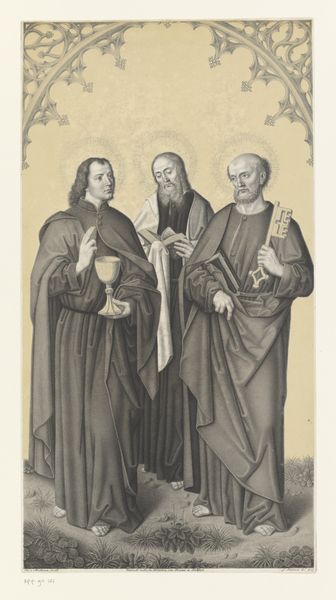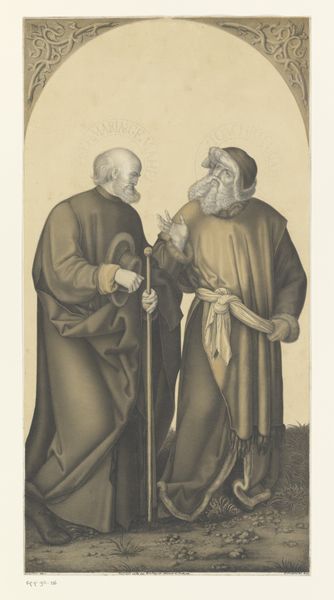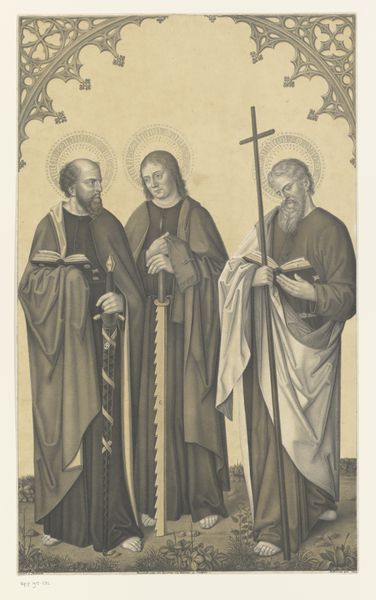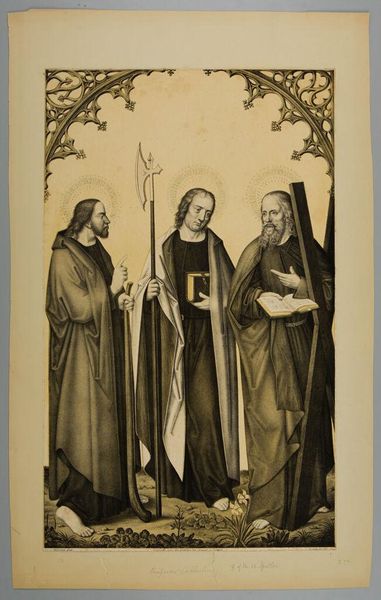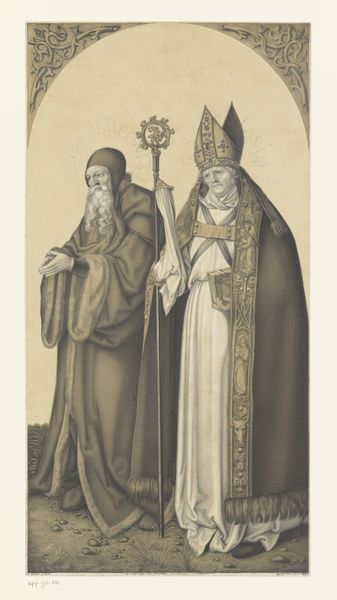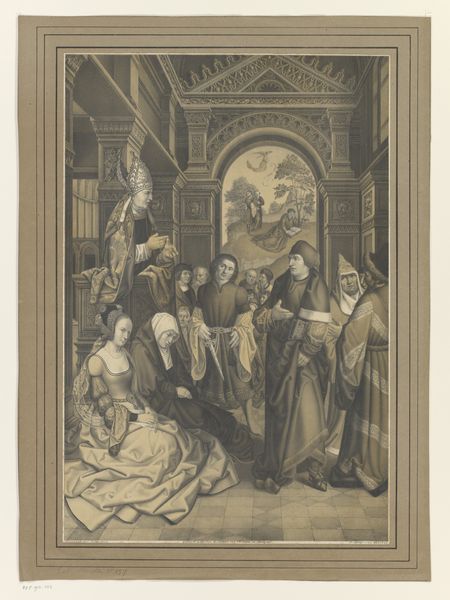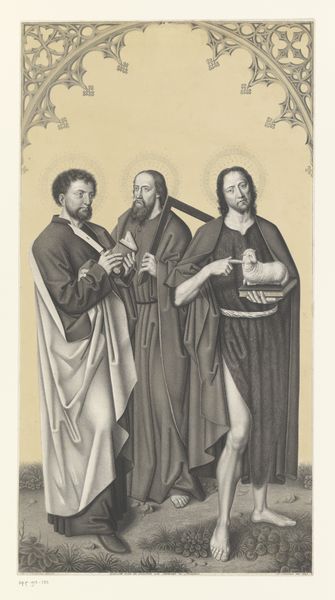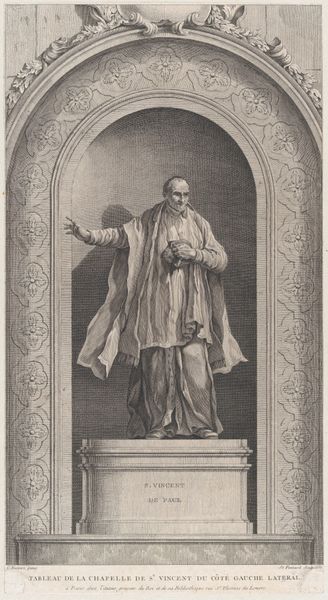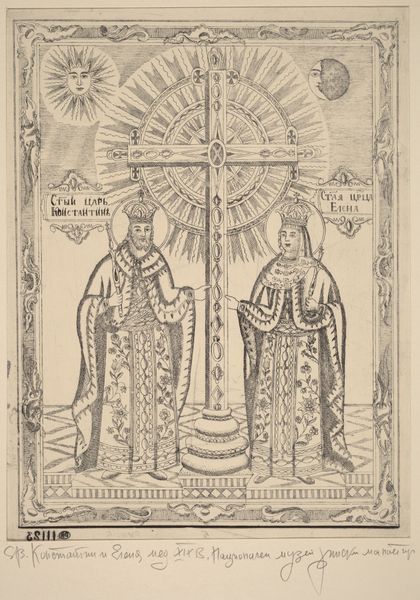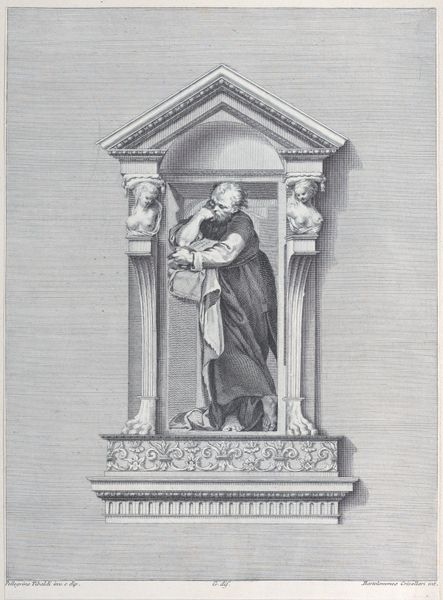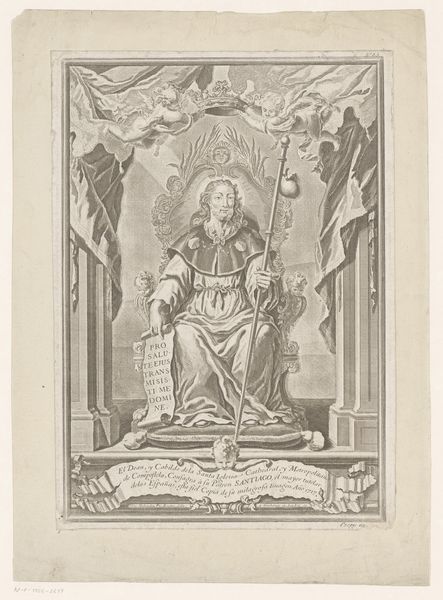
drawing, print, pen, engraving
#
drawing
# print
#
caricature
#
19th century
#
pen
#
portrait drawing
#
history-painting
#
academic-art
#
engraving
Dimensions: height 577 mm, width 352 mm
Copyright: Rijks Museum: Open Domain
Curator: This engraving from 1823 by Johann Nepomuk Strixner presents us with the figures of Saint Benedict and Saint Philip. It’s rendered with meticulous detail, typical of academic art, evoking a strong sense of historical gravitas. What are your initial thoughts? Editor: It has this, I don't know, solemn serenity to it, a kind of hushed reverence. It makes me feel like I should whisper, which is ironic because this is supposed to be an audio guide! The starkness in the tones also enhances that feeling... and I really feel drawn to the repetition of arches! Curator: The arches certainly play a role, situating the saints within a stylized, almost abstracted, church-like architecture. We see Benedict holding a book and a staff, traditional symbols of his monastic rule and authority, and Philip carrying a cross, emblematic of his martyrdom and apostolic mission. Their halos, subtly etched, further denote their holiness and status within the Christian iconography. What do these traditional symbols communicate to you, in a deeper, more humanistic sense? Editor: Hmmm... I wonder what those books are and what it would have felt like to lug that wooden cross around everywhere with you. The weight of carrying such loaded emblems must be powerful, the symbolic load is massive and, from a purely visual point of view, even with those halos, those heavy garments give me a sensation of constriction. It's funny how a drawing from so long ago can still spark such immediate feelings! Curator: Indeed. Strixner’s precise technique, working within the established visual vocabulary of the period, allows the print to resonate beyond its immediate religious context, tapping into our enduring understanding of leadership, faith, and sacrifice. It creates what one might call an intersubjective bridge between different periods of civilization. Editor: What gets me most is imagining Strixner at his desk, hunched over the copper plate with his engraving tools, completely focused, transforming belief into lines. You know? Curator: Absolutely! It is also important to highlight the engraving method to transmit such powerful images across the time, which makes their message more transcendental and, as you say, moving. Editor: Thanks! You too.
Comments
No comments
Be the first to comment and join the conversation on the ultimate creative platform.
